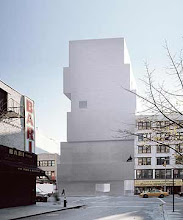 By the time of Hopper's painting 'Eleven a.m.' was realised in 1926, a major change in women's roles had taken place. The Suffragist movement's campaign of the early 20th century resulted in women gaining the ability to vote in 1919. At the time, women's gender roles were in the process of shifting from the traditional archetype of the mother/wife role to a more independent role. Freud's theories were used by young women to advocate the new exploration of sexuality and to prolong the wait for them to take up roles as wife/mother. [x] Changes in gender roles were rapidly documented by the "mass culture of the burgeoning magazine and movie industries, as well as the new medium of motion pictures and expansions in advertising.' [x] It can be assumed that these changes were also documented in art.
By the time of Hopper's painting 'Eleven a.m.' was realised in 1926, a major change in women's roles had taken place. The Suffragist movement's campaign of the early 20th century resulted in women gaining the ability to vote in 1919. At the time, women's gender roles were in the process of shifting from the traditional archetype of the mother/wife role to a more independent role. Freud's theories were used by young women to advocate the new exploration of sexuality and to prolong the wait for them to take up roles as wife/mother. [x] Changes in gender roles were rapidly documented by the "mass culture of the burgeoning magazine and movie industries, as well as the new medium of motion pictures and expansions in advertising.' [x] It can be assumed that these changes were also documented in art.Edward Hopper's marriage and relationship with his wife conformed to the new shift in marriage from strict family organisation roles to that of the companion relationship model which was mutually sexually gratifying and affectionate. [x] Hopper's wife often modelled for his paintings and they came up with the identities of the female subjects together. [x p67] The strong relationship between Edward and his wife Jo would have heavily influenced his work.
Image reference: http://threadforthought.net/wp-content/uploads/2010/02/Clara-Bow-in-1920s.jpg




No comments:
Post a Comment